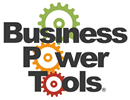Press Release Formatting Suggestions
To ensure that your press release looks professional and makes a positive impact, we offer the following formatting suggestions:
- Use only 8 1/2 by 11 inch company letterhead.
- Use 1-1/2 or double spacing (to increase legibility).
- Center headlines and use a Bold typeface to make headlines stand out.
- Capitalize the first letter of each word in the headline except for articles like “a,” “an” or “the,” and prepositions like “of,” “to” or “from” to make the headline more distinctive. The Use of Upper and Lower Case Letters in a Headline Increases Legibility.
- Print the word “more” between two dashes centered at the bottom of the page to alert reporters that another page follows:
– More – - Print three number symbols centered after the last paragraph to indicate the end of the press release:
###
Tip: Draw attention to important selected sentences by highlighting them with a yellow marker.
Save Money on Printing
Your materials should look professional, but there’s no need to waste money paying for glitz. The press doesn’t care if your release is printed on 60-pound colored paper with colored envelopes. They just want useful information.
The most economical, cost-effective press releases are produced on plain 20-pound bond paper imprinted with the company’s letterhead. Some companies think a colored press release stands out, but that’s not the case. A press release should not look like a brochure, pamphlet or any other type of marketing material. Jeff Silverstein, publisher of the Digital Information Group, was not impressed with a stunning press release with big headlines, pictures, lots of color and very little text. “It doesn’t look like it contains the information I am looking for,” he said.
If the press release is too fancy, a reporter may think it is a brochure or sales piece that doesn’t contain the hard information needed to write a story. Editors dislike receiving publicity material identical to items meant for dealers or distributors.
Rich Malloy, Executive Editor of ByteWeek, receives about a three-foot stack of press releases every day. Because reporters receive so much material – including dozens of press releases printed on colored paper — yours won’t stand out just because it looks glitzy. What does stand out, however, are the company names in the return addresses and on the letterhead. The press looks at the company name and thinks:
- “This is a great company. They do good work. I’d better look at this.”, or
- “This is a company I’ve never heard of. I’ll give it a shot.”, or
- “This is a company I’ve seen before. I don’t like their product. I’m going to chuck it without even reading it.”
Develop good products and build good rapport with the press. When you do, your press releases will get noticed.
